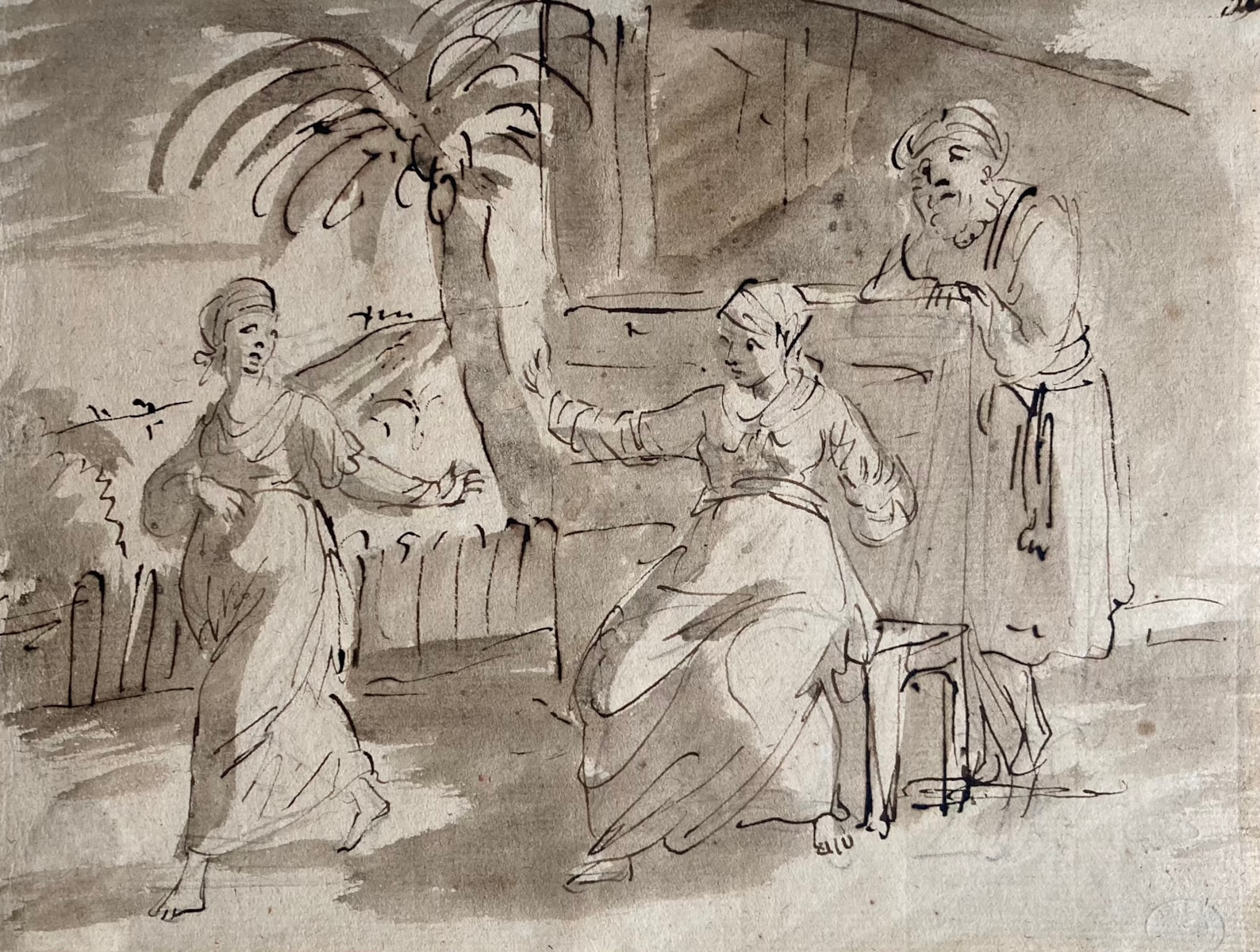
Pier Francesco Mola (Coldrerio 1612 - Rome 1666)
The banishment of Hagar
Description:
inscribed in brown ink, upper right (recto): 30; collectors’ marks (verso) [L.108a, L2014e]; collector’s mark on old mount [L.2811b]; inscribed on old mount: Cat 211.
pen and brown ink and wash over black chalk
150 x 195 mm
Provenance:
Alfred A. de Pass (1861-1952), London [L.108a]
by whom given to the Royal Cornwall Museum, Truro, 1928 [L.2014e]
by whom deaccessioned
their sale, Christie's, London: 30 November 1965, Lot 133 (as part of a lot of 3)
Dr C.R. Rudolf (1884-1974), London [L.2811b]
Phillips, London: 2 July 1990, Lot 166 (as Italian School, 17th Century)
where acquired by the present owner
Literature
G. Penrose, Cornwall County Museum and Art Gallery, Truro: catalogue of paintings, drawings and miniatures in the Alfred A. de Pass collection, Truro, 1936, p. 24, no. 211 (as Venetian School, 18th century, with incorrect dimensions)
Note:
In his characteristically dramatic combination of painterly wash and fluid penwork, Mola creates a scene of pathos through pictorial division. The morose Hagar leaves the safety of Sarai and Abram’s home, seen to the right of the drawing, and journeys out towards the hilly landscape with the palm tree, seen to the left. In a half-turn of appeal Hagar is met with Sarai’s outstretched arm of dismissal. Abram stands behind his wife, leaning on a ledge, regretful but unacting. The drawing is stylistically comparable with a second depiction of Hagar in the National Gallery of Art Washington, and a drawing of the Rest on the Flight into Egypt in the Teylers Museum, Haarlem.
Please contact us for a full catalogue entry.
